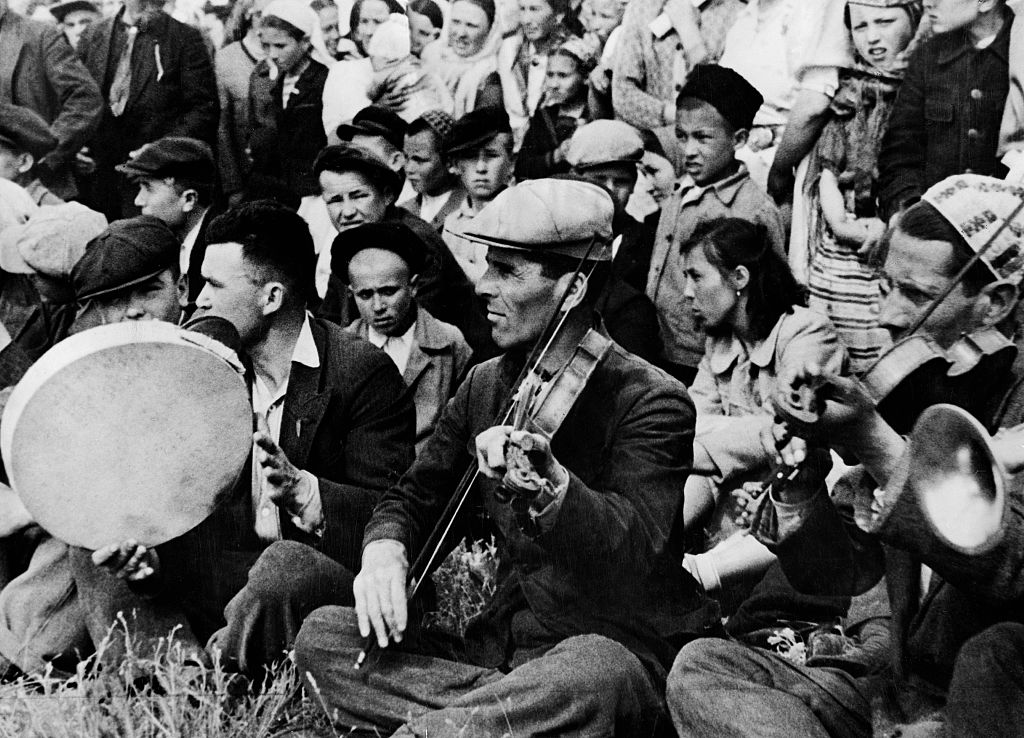Saturday 18 May marks the 80th anniversary of one of history’s least known but most traumatic genocides.
Early that morning in 1944, Soviet internal security troops spread throughout the Crimean peninsula. They surrounded Crimean Tatar homes and villages, rounding up the entire population of nearly 200,000 at gunpoint. Crimean Tatars were loaded onto cattle trains, which transported them some three thousand kilometres east to Central Asia and Siberia.
Several thousand Crimean Tatars died on the journey. Over the next five years some 30 to 40 per cent of the population died from hunger, disease and cold. Survivors were unceremoniously dumped in remote areas with their movements restricted and limited means of subsistence or support.
Soviet dictator Joseph Stalin ordered this collective punishment of the Crimean Tatars and seven other small nations, accusing them of collaborating with Nazi Germany’s invasion from 1941. This was a calumny: they had collaborated to no greater extent than other Soviet nationalities. Some 40,000 Crimean Tatars fought in the Red Army and six won the highest bravery award. Stalin’s real fear was that peoples with Muslim or Turkic heritage near the borders might prove unreliable in the event of war.
The surviving Crimean Tatars spent over 40 years in exile. The authorities tried to make them assimilate with other peoples in the region. They were unable to learn their language in schools. They were no longer included in the census. Evidence of their existence in Crimea was erased, with some 2,000 Tatar place names Russified.
Several scholars have argued convincingly that these actions constituted genocide, aimed at eliminating the Crimean Tatars as a self-identifying nationality.
Claims justifying Crimea’s annexation by force are not only flimsy, but rest on the blood and tears of an indigenous people.
Some national parliaments have now recognised the deportations and exile – the Sürgünlik – as a genocide: Ukraine itself, Canada, Latvia and Lithuania. As did the first democratically elected Russian parliament in 1991. Ahead of the 80th anniversary, Ukraine’s parliament has called on other countries to do the same.
The Australian parliament and other legislatures should heed this call. It would underline the rights of a long-oppressed people to self-determination in their homeland. It would also rebuff territorial aggression and annexation by force.
The Crimean Tatars were only allowed to return to Crimea in 1989, after decades of peaceful protest and repeated imprisonment of their leaders. They were loyal to the new Ukrainian state after it gained independence in 1991. In 1999 President Leonid Kuchma gave their Mejlis, or representative council, formal status as an advisory body – a kind of Voice. The Ukrainian parliament later recognised the Crimean Tatars as an indigenous people, as have the UN Permanent Forum on Indigenous Peoples and the European Parliament.

It was thus a renewed trauma for the Crimean Tatars when Russia invaded overnight in February 2014 and annexed the region three weeks after a sham referendum. The Crimean Tatars vehemently opposed the takeover. Their leaders and activists have since been imprisoned or forced out, some killed or disappeared. Crimean Tatar media were closed. Human rights groups estimate there are more than 150 political prisoners in Crimea. Russia banned the Mejlis, defying a ruling of the International Court of Justice.
Despite Kremlin narratives that Crimea rightfully belongs to Russia, the Russian Federation did not make any claim on the peninsula prior to the 2014 invasion. President Vladimir Putin himself ratified in 2004 a treaty delineating the borders between Russia and Ukraine.
The Russian Empire originally annexed Crimea in 1783. At that time there were hardly any Russians in Crimea. Dispossession, discrimination and despair under Russian rule led large numbers to leave over the next century, while many Russians and Ukrainians settled there.
Civil War, collectivisation and Stalin’s purges took a further toll in the 20th century. Even so, it has been estimated that by 2014, 90 per cent of Russian and Slavic residents of Crimea were from families who had only settled there after the 1944 deportations.
In Ukraine’s 1991 referendum on independence from the Soviet Union, Crimeans voted in favour by a majority of 57 to 43 per cent. Opinion polls in the years prior to 2014 showed little change to that underwhelming level of support for joining Russia.
So claims justifying Crimea’s annexation by force are not only flimsy, but rest on the blood and tears of an indigenous people. And all territorial conquest and annexation has been beyond the pale since 1945. The international community has rejected – sooner or later – such land grabs in Kuwait, Western Sahara and East Timor.
We occasionally hear arguments that Ukraine should be prepared to cede territory to Russia to end the war, and that Crimea is an obvious candidate. But on that principle, Israel could be allowed to swallow up the West Bank and wipe out Palestinian culture just as surely as Russia is repressing the Crimean Tatars and Ukrainians in the large swathes of territory it occupies.
When the law of the jungle rules, the final deterrent becomes nuclear weapons. Everyone might as well get some. Indeed, Ukraine now rues handing over ex-Soviet nuclear weapons under its control to Russia in 1994 in return for solemn security assurances in the Budapest Memorandum. Moreover, for Ukraine, continued Russian control of Crimea would remain a dagger pointed at the country’s underbelly – a springboard for renewed assault or blockade.

